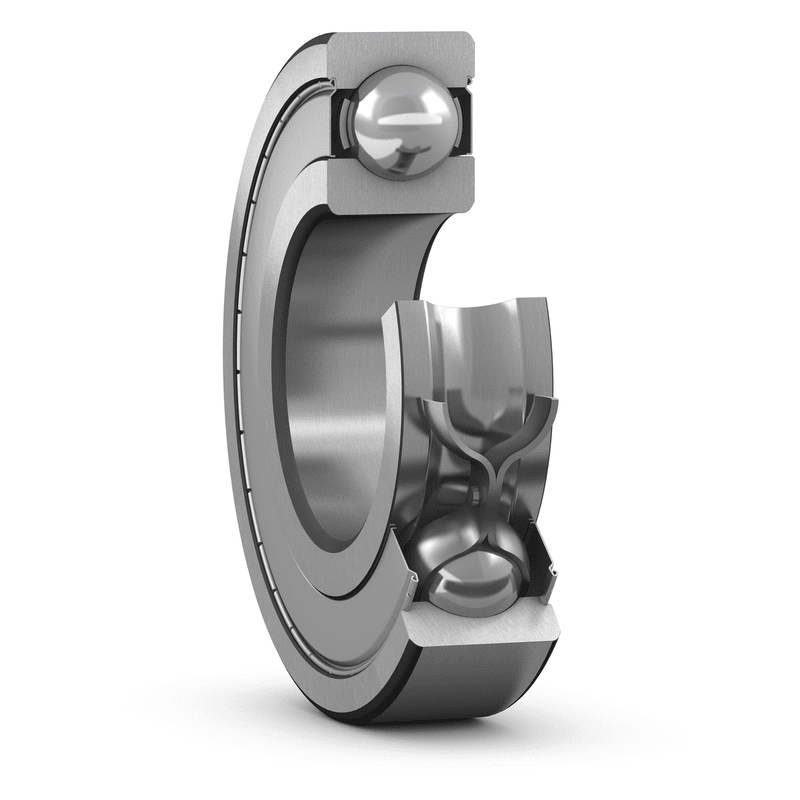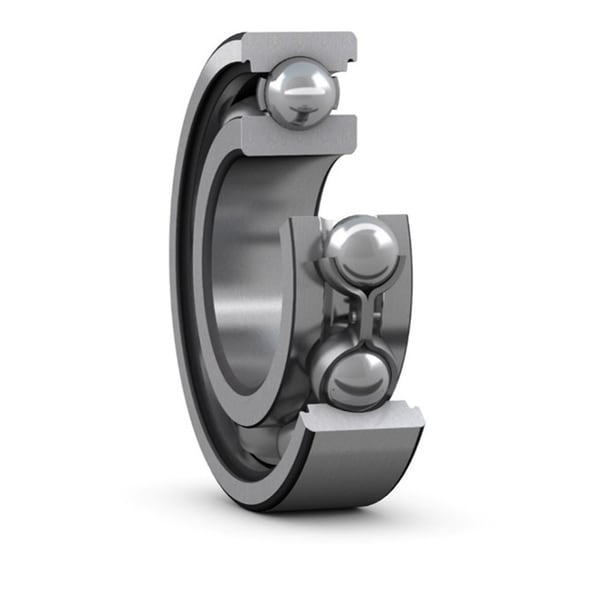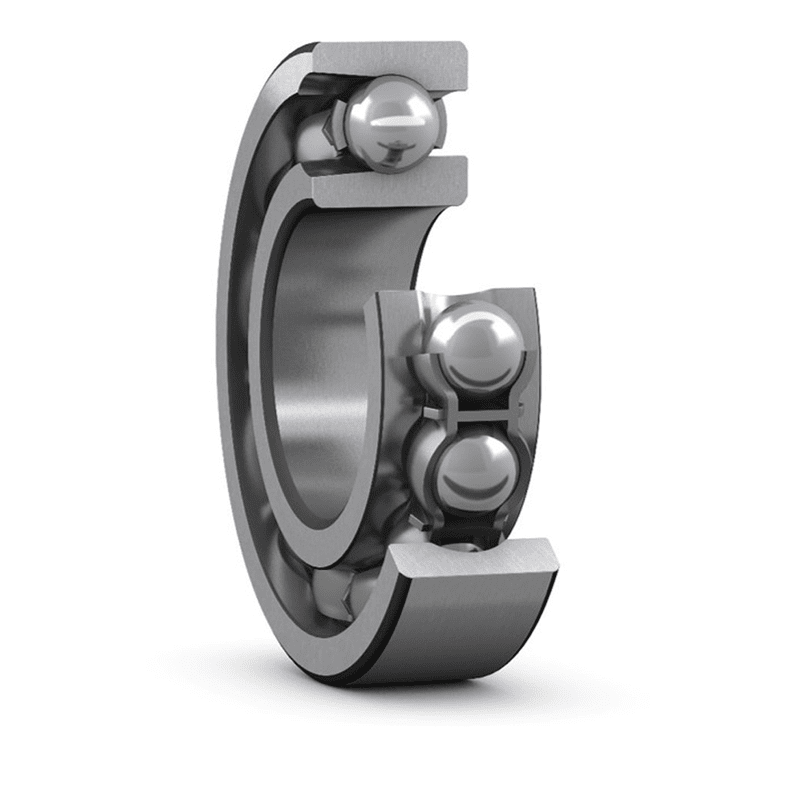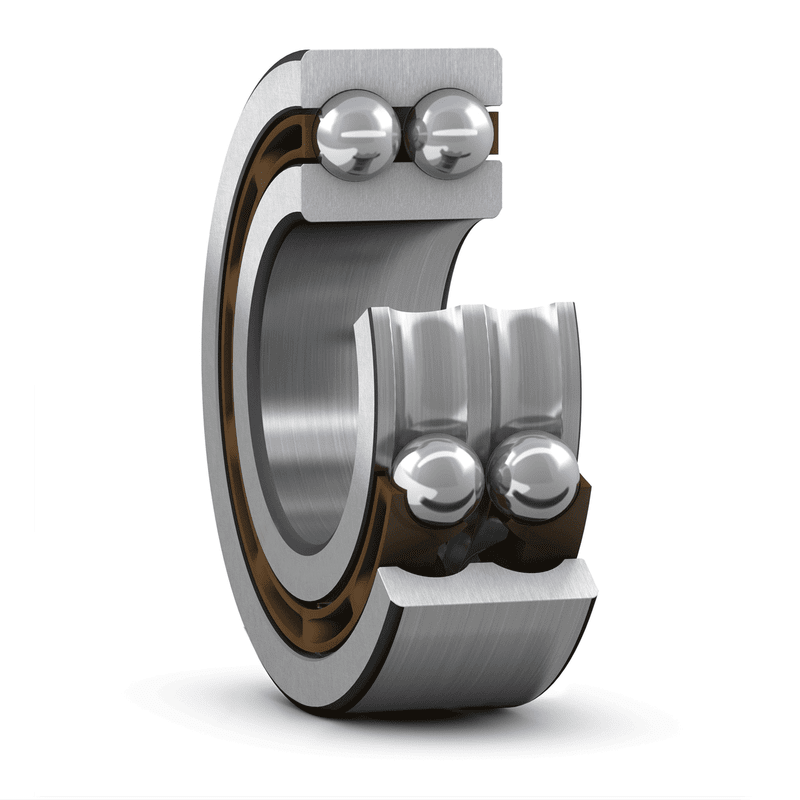There are two main factors that affect the grinding deterioration layer of SKF bearings, namely the effects of SKF bearing grinding force and grinding heat.
1. Grinding force
During the grinding process, the surface layer of the workpiece will be subjected to the cutting force, compression force, and friction force of the grinding wheel. Especially the role of the latter two is to form a highly directional plastic deformation layer and work hardening layer on the surface layer of the workpiece. These metamorphic layers will inevitably affect the variation of residual stresses in the surface layer.
(1) Cold plastic deformation layer
During the grinding process, each abrasive grain is equivalent to a cutting edge. However, in many cases, the rake angle of the cutting edge is negative, and in addition to the cutting effect, the abrasive particles cause the surface of the workpiece to experience compression (plowing effect), leaving a significant plastic deformation layer on the surface of the workpiece. The degree of deformation of this deformation layer will increase with the degree of bluntness of the grinding wheel and the increase of grinding feed rate.
(2) Thermoplastic deformation (or high-temperature deformation) layer
The instantaneous temperature formed by grinding heat on the working surface causes a sharp decrease in the elastic limit of the surface layer of the workpiece at a certain depth, even to the extent of elastic disappearance. At this time, the free extension of the working surface layer under the action of grinding force, especially compression force and friction force, is limited by the base metal, and the surface is compressed (plowed), causing plastic deformation in the surface layer. High temperature plastic deformation increases with the increase of surface temperature of the workpiece, while the grinding process remains unchanged.
(3) Work hardening layer
Sometimes, using microhardness and metallographic methods, it can be observed that the surface layer hardness increases due to processing deformation.
2. Grinding heat
In grinding, a large amount of energy is consumed and a large amount of grinding heat is generated in the contact area between the grinding wheel and the workpiece, resulting in local instantaneous high temperatures in the grinding area. By using the formula of linear motion heat source heat transfer theory to derive, calculate or apply infrared and thermocouple methods to measure the instantaneous temperature under experimental conditions, it can be found that the instantaneous temperature in the grinding zone can reach up to 1000-1500 ℃ within 0.1-0.001ms. Such instantaneous high temperature is sufficient to cause high-temperature oxidation, amorphous structure, high-temperature tempering, secondary quenching, and even burn cracking in the surface layer at a certain depth of the working surface.
(1) SKF bearing surface oxide layer
Under the action of instantaneous high temperature, the steel surface reacts with oxygen in the air to form an extremely thin (20-30 nm) layer of iron oxide. It is worth noting that there is a corresponding relationship between the thickness of the oxide layer and the total thickness of the surface grinding deterioration layer test results. This indicates that the thickness of its oxide layer is directly related to the grinding process and is an important indicator of grinding quality.
(2) Amorphous tissue layer
When the instantaneous high temperature in the grinding zone causes the surface of the workpiece to reach a molten state, the molten metal molecules are uniformly coated on the working surface and cooled at an extremely fast speed by the base metal, forming a very thin layer of amorphous structure. It has high hardness and toughness, but it is only around 10nm and can be easily removed in precision grinding processes.
(3) High temperature tempering layer
The instantaneous high temperature in the grinding zone can heat the surface to a temperature higher than the tempering heating temperature of the workpiece within a certain depth (10-100nm). Without reaching the austenitizing temperature, as the heating temperature increases, the surface will undergo a layer by layer structural transformation corresponding to the heating temperature through re tempering or high-temperature tempering, and the hardness will also decrease accordingly. The higher the heating temperature, the more severe the decrease in hardness.
(4) SKF bearing second layer quenching layer
When the instantaneous high temperature in the grinding zone heats the surface layer of the workpiece above the austenitization temperature (Ac1), the austenitized structure of that layer is quenched again into martensitic structure during the subsequent cooling process. Any workpiece with secondary quenching burn must have a high-temperature tempering layer with extremely low hardness below the secondary quenching layer.
(5) Grinding cracks
The secondary quenching burn will cause stress changes in the surface layer of the workpiece. The secondary quenching zone is in a compressed state, and there is a large tensile stress in the material below the high-temperature tempering zone, which is where crack cores may occur. Cracks are prone to propagate along the original austenite grain boundaries. Severe burns can cause cracks (often in the form of cracks) on the entire grinding surface, resulting in the scrapping of the workpiece.

Single row deep groove ball bearings are the most widely used type of bearing. Provide closed (with sealed or dust cover) or open design. Open type be...

Stainless steel deep groove ball bearings can resist corrosion caused by moisture and other media. Provide closed (with sealed or dust cover) or open ...

A single row deep groove ball bearing with a ball loading notch has a ball loading notch on both the inner and outer rings, which is used to load more...

Double row deep groove ball bearings are very suitable for use in bearing configurations where the load-bearing capacity of single row deep groove bal...
 Copyright © 2002-2021 SKF Bearing Copyright Address:1-2F, Building 4, 1628 Lizheng Road, Lingang New Area, China (Shanghai) Pilot Free Trade Zone
Copyright © 2002-2021 SKF Bearing Copyright Address:1-2F, Building 4, 1628 Lizheng Road, Lingang New Area, China (Shanghai) Pilot Free Trade Zone